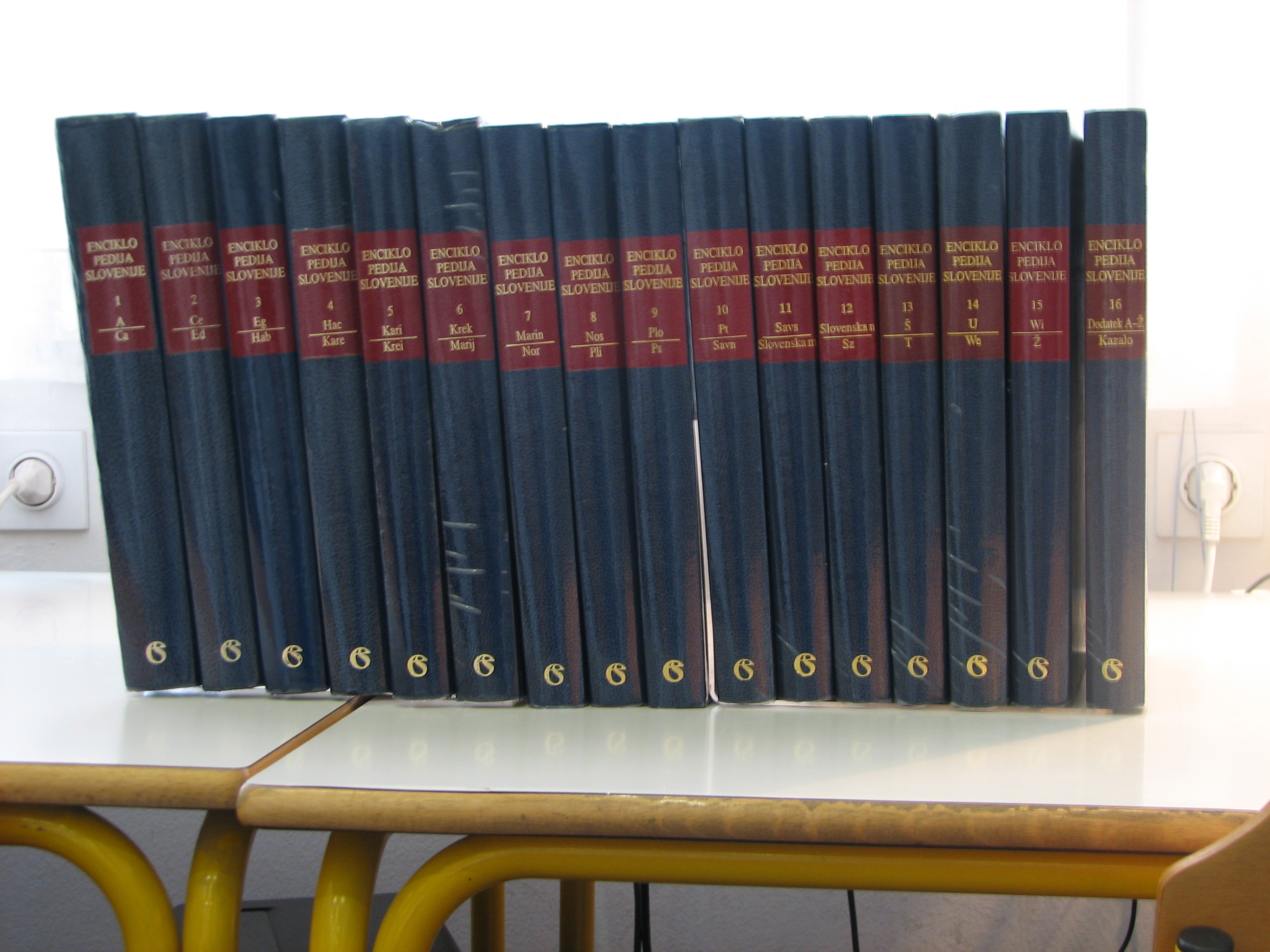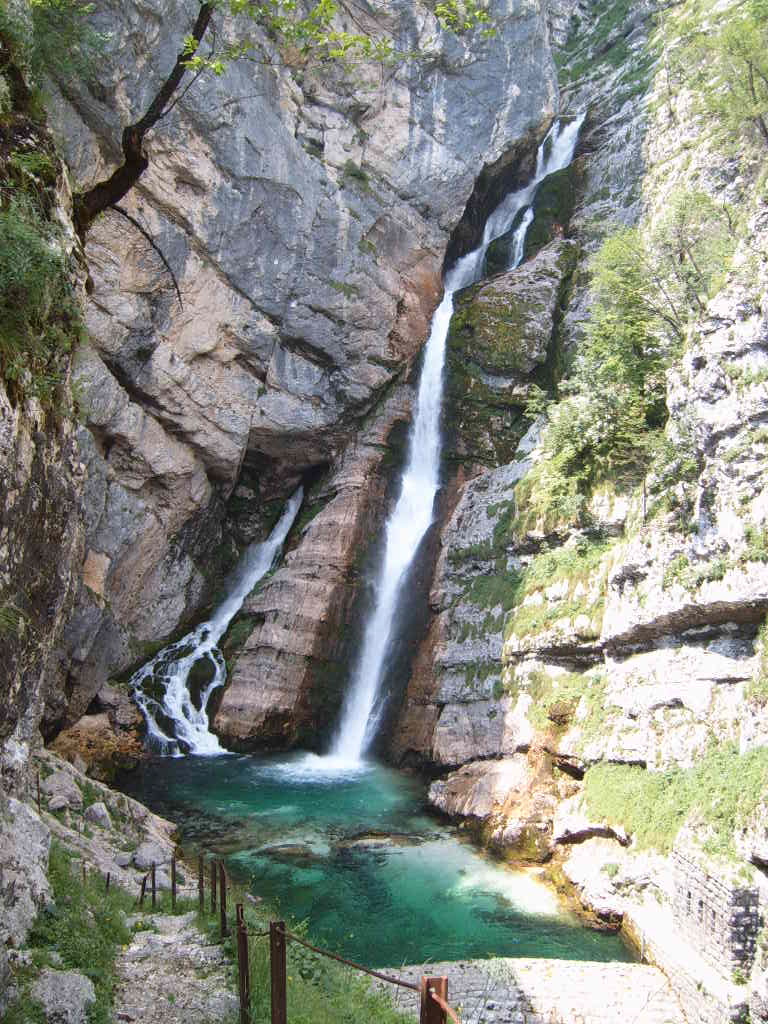|
Savica (waterfall)
Savica Falls is a waterfall in northwestern Slovenia. It is high and is fed by a karst spring also called Savica just above the waterfall. A large portion of water is sourced from a karst basin around Black Lake, which lies around higher above the waterfall, because of which the spring has a relatively steady and strong flow. Water flows to the spring below the ground, where it splits into two parts. After heavy rains, the water supply from the lake and its surroundings may exceed the capacity of tunnels, and a portion of water flows on the surface in cascading waterfalls high. The waterfall continues in a stream of the same name, which flows into Lake Bohinj as its main source. Water from Lake Bohinj is further a source of the Sava Bohinjka, which forms the Sava River after joining with the Sava Dolinka.Baedeker, Karl (1879) "Terglou: The Valley of the Wocheiner Save" ''The Eastern Alps: Including the Bavarian Highlands, the Tyrol, Salzkammergut, Styria, and Carinthia'' ... [...More Info...] [...Related Items...] OR: [Wikipedia] [Google] [Baidu] |
Ukanc - Slap Savica
Ukanc () is a settlement near Lake Bohinj in the Municipality of Bohinj in the Upper Carniola region of Slovenia. It is southwest of the lake. The majority of buildings in the settlement are either hotels or holiday houses. Geography Ukanc is a scattered settlement on a shady rolling plain at the west end of Lake Bohinj at the end of the valley, where mountain walls rise on three sides, closed in by Mount Vogel (), Little Peak (''Mali vrh'', ), Mount Peršivec (), and the Komarča Cliff (). It is connected by road to Bohinjska Bistrica. The soil largely consists of alluvium from the Ukanc Suha River (''Ukanška Suha'') and Žagar Gorge (''Žagarjev graben''), as well as the Savica River. In meteorological terms, Ukanc is one of the wettest places in Slovenia. Name Ukanc was attested in written sources in 1498 under various names: ''Vkanes'', ''Vkentzi'', ''Vkantzich'', ''Nakonczi'', ''Vkonczich'', and ''Vkansczich''. The name is a fused dialect form of the prepositional phrase ''v ... [...More Info...] [...Related Items...] OR: [Wikipedia] [Google] [Baidu] |
Slovenia
Slovenia ( ; sl, Slovenija ), officially the Republic of Slovenia (Slovene: , abbr.: ''RS''), is a country in Central Europe. It is bordered by Italy to the west, Austria to the north, Hungary to the northeast, Croatia to the southeast, and the Adriatic Sea to the southwest. Slovenia is mostly mountainous and forested, covers , and has a population of 2.1 million (2,108,708 people). Slovenes constitute over 80% of the country's population. Slovene, a South Slavic language, is the official language. Slovenia has a predominantly temperate continental climate, with the exception of the Slovene Littoral and the Julian Alps. A sub-mediterranean climate reaches to the northern extensions of the Dinaric Alps that traverse the country in a northwest–southeast direction. The Julian Alps in the northwest have an alpine climate. Toward the northeastern Pannonian Basin, a continental climate is more pronounced. Ljubljana, the capital and largest city of Slovenia, is geogr ... [...More Info...] [...Related Items...] OR: [Wikipedia] [Google] [Baidu] |
Karst Spring
A karst spring or karstic spring is a spring (outflow of groundwater) that is part of a karst hydrological system. Description Because of their often conical or inverted bowl shape, karst springs are also known in German-speaking lands as a ''Topf'' ("pot") which is reflected in names such as Aachtopf (the source of the Radolfzeller Aach) or Blautopf (the source of the Blau river in Blaubeuren). Karst springs often have a very high yield or discharge rate, because they are often fed by underground drainage from a large catchment basin. Because the springs are usually the terminus of a cave drainage system at the place where a river cave reaches the Earth's surface, it is often possible to enter the caves from karst springs for exploration. Large karst springs are located in many parts of the world; the largest ones are believed to be in Papua New Guinea, with others located in Mediterranean countries such as Bosnia and Herzegovina, Croatia, Turkey, Slovenia, and Italy. Types ... [...More Info...] [...Related Items...] OR: [Wikipedia] [Google] [Baidu] |
Enciklopedija Slovenije
The ''Encyclopedia of Slovenia'' ( sl, Enciklopedija Slovenije) is a Slovene-language encyclopedia that contains topics related to Slovenia. It was published from 1987 to 2002 in 16 volumes by Mladinska knjiga in cooperation with the Slovenian Academy of Sciences and Arts.''Enciklopedija Slovenije''. Ljubljana. Mladinska knjiga, 1987-2002. ; The editors of the encyclopedia were Marjan Javornik, Dušan Voglar, and Alenka Dermastia, and the editors of special topics were Rajko Pavlovec, Blaž Resman, Janez Stergar, Zdravko Mlinar, Peter Weiss, Tone Wraber, Aleš Krbavčič, and Tone Ferenc. The first volumes were published in a print run of 30,000, but the print run was reduced to 15,000 for later volumes. For its overall work on the ''Encyclopedia of Slovenia'', the publisher Mladinska knjiga received the Golden Order of Freedom of the Republic of Slovenia, the highest-ranking order awarded in Slovenia. Volumes # A–Ca, 1987, xvii + 421 pages, 30,000 copies # ... [...More Info...] [...Related Items...] OR: [Wikipedia] [Google] [Baidu] |
Karst
Karst is a topography formed from the dissolution of soluble rocks such as limestone, dolomite, and gypsum. It is characterized by underground drainage systems with sinkholes and caves. It has also been documented for more weathering-resistant rocks, such as quartzite, given the right conditions. Subterranean drainage may limit surface water, with few to no rivers or lakes. However, in regions where the dissolved bedrock is covered (perhaps by debris) or confined by one or more superimposed non-soluble rock strata, distinctive karst features may occur only at subsurface levels and can be totally missing above ground. The study of ''paleokarst'' (buried karst in the stratigraphic column) is important in petroleum geology because as much as 50% of the world's hydrocarbon reserves are hosted in carbonate rock, and much of this is found in porous karst systems. Etymology The English word ''karst'' was borrowed from German in the late 19th century, which entered German much earlier ... [...More Info...] [...Related Items...] OR: [Wikipedia] [Google] [Baidu] |
Black Lake (Triglav Lakes Valley)
Black Lake ( sl, Črno jezero) () is the lowest-lying lake in the Triglav Lakes Valley, part of the Julian Alps in Slovenia. It is named for its location in a basin in the middle of the forest, which stretches right to the edge of the Komarča rock face. Because of its relatively low elevation, it is the warmest of the Triglav Lakes. At the surface, its temperature in summer is , whereas in winter it is . It is long, wide, and up to deep. The Alpine Newt ('), endemic Endemism is the state of a species being found in a single defined geographic location, such as an island, state, nation, country or other defined zone; organisms that are indigenous to a place are not endemic to it if they are also found else ... to the Alps, lives in it. References External links * {{Hydrography of Slovenia Glacial lakes of Slovenia Triglav Lakes Valley Municipality of Bohinj Lakes of the Julian Alps Wetlands of Slovenia ... [...More Info...] [...Related Items...] OR: [Wikipedia] [Google] [Baidu] |
Lake Bohinj
Lake Bohinj ( sl, Bohinjsko jezero, german: Wocheiner See), covering , is the largest permanent lake in Slovenia. It is located within the Bohinj Valley of the Julian Alps, in the northwestern Upper Carniola region, and part of Triglav National Park. Geography Lake Bohinj is long and at its maximum width. It is a glacial lake dammed by a moraine. The largest of the streams that flow into the lake, the Savica ('little Sava'),Baedeker, Karl (1879) "Terglou: The Valley of the Wocheiner Save" ''The Eastern Alps: Including the Bavarian Highlands, the Tyrol, Salzkammergut, Styria, and Carinthia'' (4th ed.) Dulau and Co., Londonp. 353 is fed from ''Črno jezero'' (Black Lake), the lowest-lying lake in the Triglav Lakes Valley. The outflow at the eastern end is the Jezernica creek which merges with the Mostnica to form the Sava Bohinjka, which in turn becomes the larger Sava River at the confluence with the Sava Dolinka. As found out already by Belsazar Hacquet in the 18th century, muc ... [...More Info...] [...Related Items...] OR: [Wikipedia] [Google] [Baidu] |
Sava Bohinjka
The Sava Bohinjka is a headwater of the Sava River in northwestern Slovenia. At in length, it is the shorter of the two headwaters that become the Sava River in Radovljica, the other being the -long Sava Dolinka. Course The Sava Bohinjka originates under the Komarča Crag at an elevation of , from springs fed by the Triglav Lakes Valley. Until it reaches Lake Bohinj, the river is known as the Savica ('little Sava'), and features the -high Savica Falls ( sl, slap Savica) at its source.Baedeker, Karl (1879) "Terglou: The Valley of the Wocheiner Save" ''The Eastern Alps: Including the Bavarian Highlands, the Tyrol, Salzkammergut, Styria, and Carinthia'' (4th ed.) Dulau and Co., Londonp. 353 It then flows through the Ukanc Gorge, where the 3 MW Savica power plant is located, before flowing into Lake Bohinj, where it creates a small delta. It flows from Lake Bohinj as the Sava Bohinjka through Bohinjska Bistrica, Bohinjska Bela, and close to Lake Bled, before meeting the Sava D ... [...More Info...] [...Related Items...] OR: [Wikipedia] [Google] [Baidu] |
Sava
The Sava (; , ; sr-cyr, Сава, hu, Száva) is a river in Central and Southeast Europe, a right-bank and the longest tributary of the Danube. It flows through Slovenia, Croatia and along its border with Bosnia and Herzegovina, and finally through Serbia, feeding into the Danube in its capital, Belgrade. The Sava forms the main northern limit of the Balkan Peninsula, and the southern edge of the Pannonian Plain. The Sava is long, including the Sava Dolinka headwater rising in Zelenci, Slovenia. It is the largest tributary of the Danube by volume of water, and second-largest after the Tisza in terms of catchment area () and length. It drains a significant portion of the Dinaric Alps region, through the major tributaries of Drina, Bosna, Kupa, Una, Vrbas, Lonja, Kolubara, Bosut and Krka. The Sava is one of the longest rivers in Europe and among the longest tributaries of another river. The population in the Sava River basin is estimated at 8,176,000, and is shared by ... [...More Info...] [...Related Items...] OR: [Wikipedia] [Google] [Baidu] |



.jpg)


